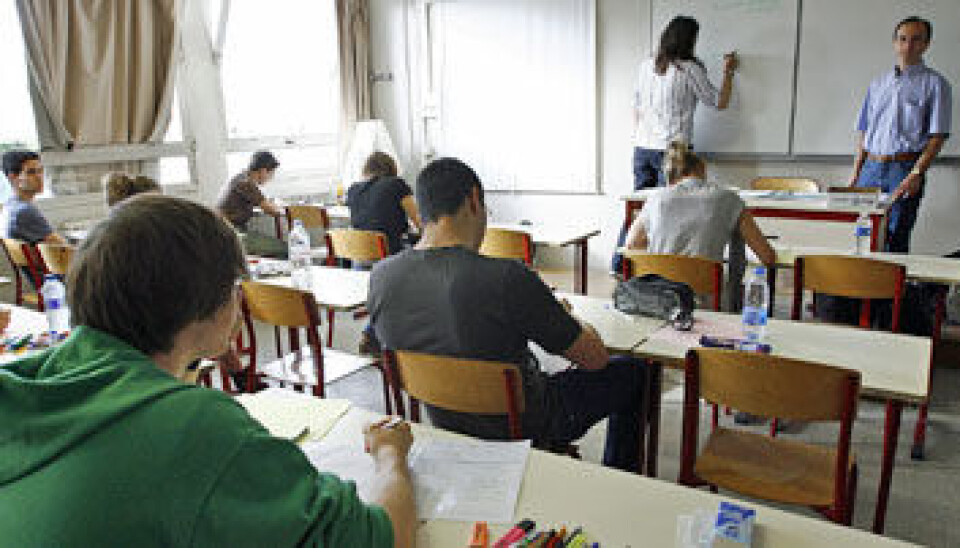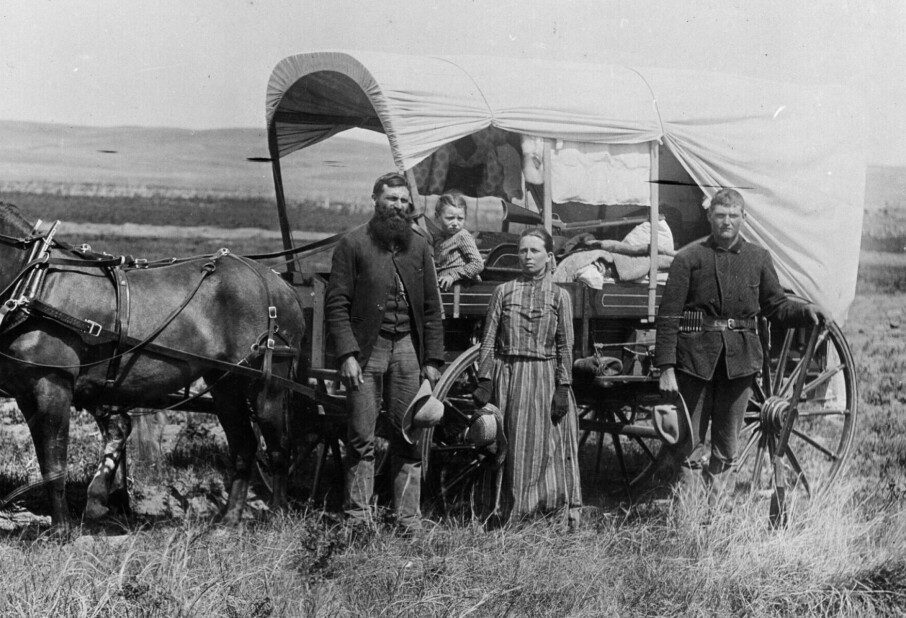
Abandoned teens may be likely school dropouts
“I was left with the feeling that the adult world had betrayed them,” says a researcher who interviewed school dropouts.
Denne artikkelen er over ti år gammel og kan inneholde utdatert informasjon.
One in five Norwegian teens never completes high school, according to Statistics Norway. We also know that teens who drop out before getting a high school diploma are more likely to have children who will also end up as dropouts.
This vicious cycle can be broken but it’s best to start early – preferably in kindergarten, according to Gro Ramsdal, a psychologist and assistant professor who teaches social educators at Harstad University College.
Ramsdal and Rikke Gürgens Gjærum, a professor of applied drama, conducted in-depth interviews of five men and five women, aged 19 to 28, who never completed high school.
The interviews revealed that the participants had several biographical common denominators. Ramsdal says that one of their important shared characteristics was that they had been abandoned, and did not have stable, supportive adult caretakers during their childhood and adolescence.
Children there’s no room for
The ten people that Ramsdal and Gjærum interviewed were part of a qualification-boosting project run by the Norwegian Labour and Welfare Administration (NAV) designed to help the unemployed find work. When researchers asked these subjects about their childhood background, they noted that the dropouts lacked stable adults in a variety of contexts.

“Some in the group had been adopted, others had been foster children and some had acute family problems that kept the adults in their lives preoccupied with other matters. The participants had also been beleaguered with various problems such as obesity, being bullied and being lonely.
“Many had experienced family break-ups and parents who established new families. There wasn’t room for these youths in the lives of their parents. They left home early thinking they could get by on their own. It’s easy to understand that this isn’t easy.”
Invisible
A previous study from the Oslo and Akershus University College reported similar traits among dropouts. The adolescents in that study reported feeling as if they were invisible at home. Ramsdal says a child’s attachment to a secure adult is an important point of departure for feeling confident enough to explore the world and learn to regulate one’s own emotions.
In the group that she and Gjærum interviewed, eight out of ten had had little adult contact and most had been bullied. Ramsdal stressed that the people they interviewed could not be seen as representative of everyone who drops out of high school without a diploma.
“Many who quit high school take a year off. The return to school and all goes well with them,” Ramsdal says.
“The people we interviewed were were struggling the most to return to school and to jobs, and who had failed in this endeavour for several years after dropping out of high school,” says Ramsdal.
Dropping out long before actually leaving school
“We were left with the feeling that the adult world had betrayed the people we interviewed,” says Ramsdal.
‟There is a considerable amount of research that shows that dropping out of school is a process that happens over time. Kids don’t simply show up one day and drop out of high school spontaneously, many are already starting to drop out in kindergarten. It should be possible for us to catch the early signs of a process that lasts as long as that,” Ramsdal said.
“Given two overweight boys in kindergarten or in early primary school, one is likely to spend a lot of time alone and the other is often involved in fights.”
“Or if you see a child with behaviour problems in fourth grade, or one who is excluded from the companionship of other pupils, you can reasonably predict that they will have troubles in higher grades and some will end up dropping out. It’s important to intervene as soon as possible.”
The study was a part of Ramsdal’s doctoral thesis work at the University of Tromsø.
More research on school conditions
Previous research has often focused on the risk factors found at school. We know there is a link between dropping out of high school and the amount of basic knowledge a person has obtained in compulsory primary and secondary schools.
According to Thomas Nordahl, a professor of pedagogy at the Hedmark University College, little focus has been given to conditions at home.
However, research shows that kids who are involved with the child welfare service often have problems at school.
“This can be caused if the child lack stable adults in his or her life, among other things. What you experience at home has consequences,” says Nordahl.
Schools don’t do a good enough job
He says that kids who have been clients of the child protection services and have later succeeded at school and with their lives in general often say things like: “I met a teacher at school who saved me”, or “I came to a school where I was understood”.
“Schools can make a positive contribution even if a child's home life poses a major challenge.”
Nordahl agees with Ramsdal that it should be possiblew to identify children who are likely to encounter problems at school at an early age. Nordahl thinks Norwegian schools aren’t doing a good enough job in this respect.
“We see twice as many kids getting special education in junior high school than in the first three grades of elementary school. This is despite the fact that their problems must have started long before junior high school.”
Attachment to an adult
Ramsdal is doing further work on the consequences of lacking a stable adult in her study participants’ lives. She believes that the quality of even a very young child's relationships to important adults influences the risk of dropping out of school.
Children use their attachment to an adult figure as a secure platform from which they can go out and explore the world. If something frightens them, the child can return to the security of reassuring arms or a lap, and later can dare to head off when the situation seems safe again.
“This attachment to a secure adult figure helps the child regulate its feelings and to develop its relationship with the world through exploration. Without a safe base the child can become inhibited in its interaction with its environment,” says Ramsdal.
She is now interested in how this affects either adapting to school or dropping out.
Interviews vs. statistics
Ramsdal and Gjærum are both educators at Harstad University College, where they train social educators, or welfare nurses.
Ramsdal points out that most research on young persons who drop out of school involves larger surveys, where a lot of people answer questionnaires, yielding quantities of data.
“In this study it was natural for us to use a qualitative approach. We wanted to know what the youths thought about their experiences and their lives.”
“We asked quite frankly: ‘What has happened in your life, and what do you think about having dropped out?’” says Ramsdal.
Personal knowledge
Thomas Nordahl thinks that qualitative studies like this one where the researchers interview a small number of persons can provide valuable insights about dropouts.
But he thinks it is also important to put these individual biographies into a larger context.
“You learn about people who can convey their experiences and feelings and offer their own interpretations as to why they haven’t completed school.”
“But if you place too much emphasis on their personal stories you can also get hung up on them and become stymied. The way that school has looked out for a child's interests is also important.”
“If children and adolescents start out with abundant risk factors from home, it’s essential that the school avoid adding to their burdens. This happens quite easily – for instance these children can be bullied at school. That can make their lives even harder to handle,” says Nordahl.
Translated by: Glenn Ostling






























